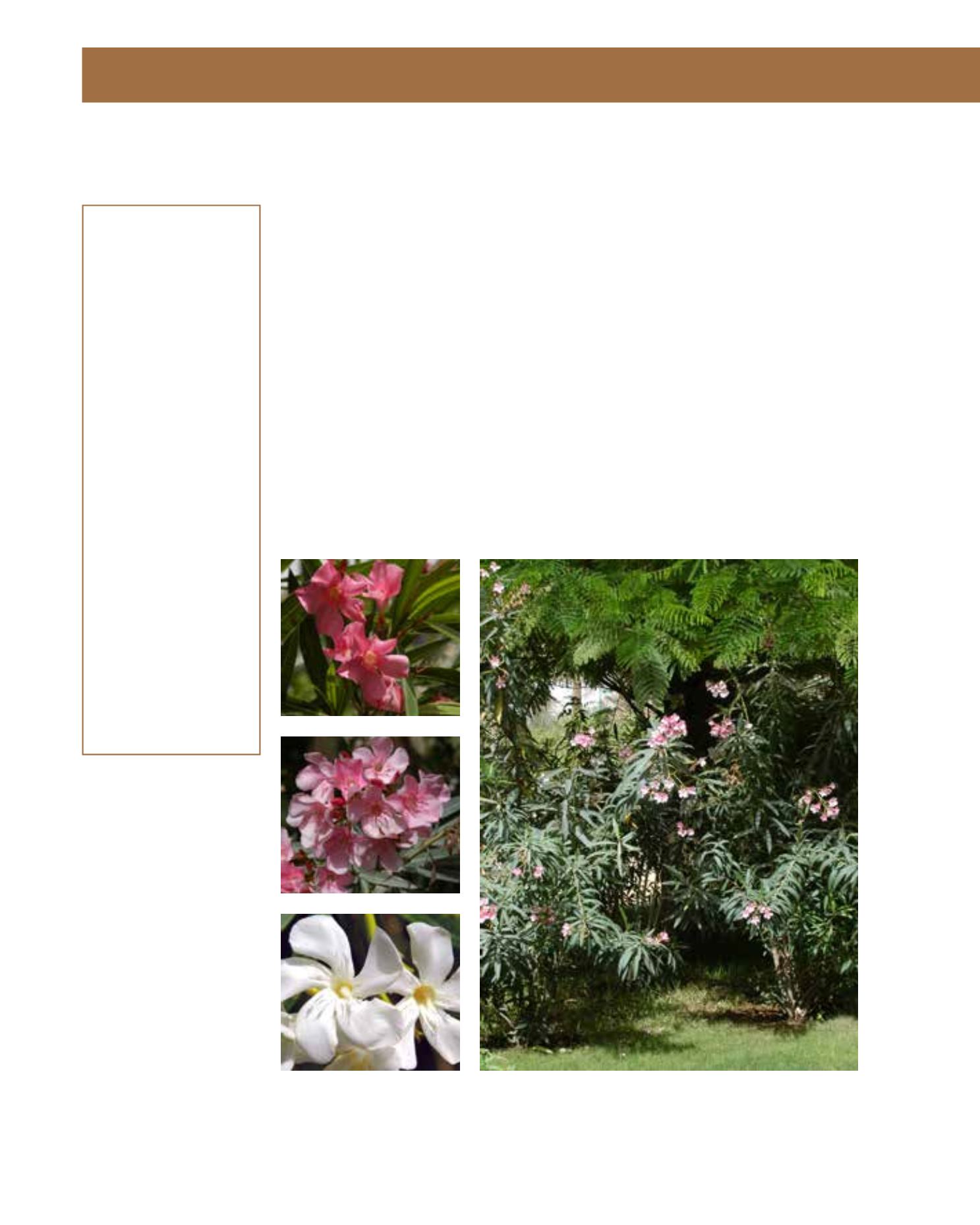

GENERAL
Origin
:
sub-Mediterranean,
Mediterranean
Vigour
:
fairly fast
growing
Humidity
:
semi-arid, semi-
humid, very
humid
Propagation :
sowing and
pricking out,
cuttings
Maintenance :
low
CONDITIONS
Urban climate :
resistant
Dessication :
resistant
Stagnant water :
vulnerable
Irrigation
:
medium
Salinity/ppm :
very high (9000
ppm)
Hardiness
:
-6°C
SHAPE
Type
:
shrub
Height
:
2 m-3 m
Spread
:
2 m-6 m
Foliage
:
evergreen
FLOWER
Colour
:
light pink
Period
:
May - September
FRUIT
Type of fruit :
pod
Fruit size
:
12 cm - 18 cm
Toxicity
:
highly poisonous
The Oleander shrub originated in the Balkans, Caucasus and Middle East with their Mediterra-
nean climates. The Arabic name for Oleander is diflah. Oleander is an evergreen shrub growing
between 2 and 3 metres high. The shape of the shrub is mostly round or oval, and multi-branched.
The leaves lanceolate in shape. The flowers are grouped in an umbelliferous raceme, appearing
in summer and quite enchanting. The variety ‘Album’ is distinguished by a brilliant white, ‘Pink
Beauty’ in a fresh pink as the name implies, and ‘Sealy Pink’ flowers with a bright pink. After
flowering, elongated star-shaped fruits appear. The root system is extensive. Maintenance of the
Oleander is minimal and pruning can be done frequently to the base so it is able to rejuvenate
from the ground up. All parts of Oleander are completely poisonous. Propagation can be done by
sowing and pricking and by cuttings. The Oleander prefers a full sunny location and is moderate-
ly frost resistant. Irrigation should be moderate, because it likes moist soil. It can withstand a high
salinity level. The shrub is heat-resistant and can withstand short-term desiccation. The shrub
can be used as specimen, dominant plant, grouped or massed planting, and as a flowering hedge.
Owing to the strong root system, it is suitable as a bank stabiliser and for environmental consoli-
dation. In landscape design, it will produce good effects as shelter or screen plant. Park planting,
public open spaces, urban areas and container planting are all possible with this attractive shrub.
211
Nerium oleander,
Apocynaceae
Oleander,
diflah
















